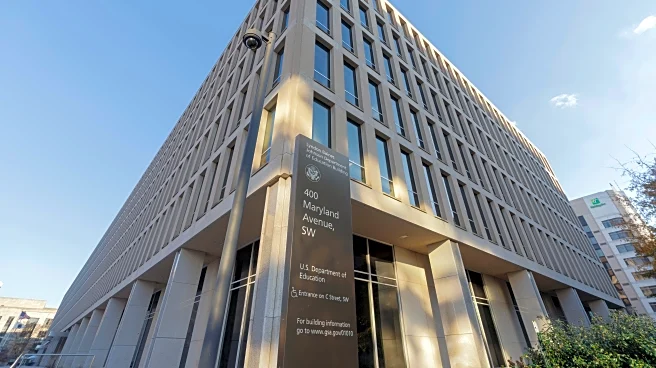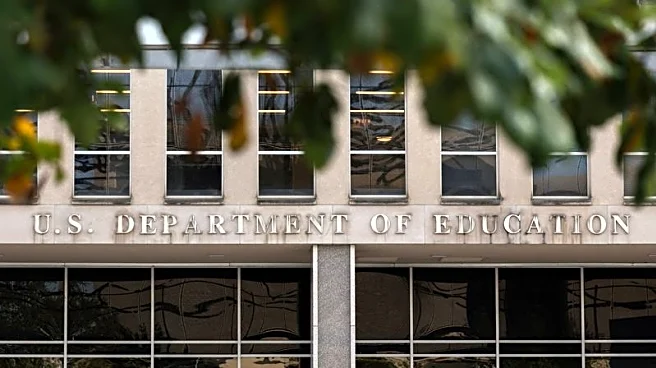What's Happening?
The Trump administration is encountering difficulties in its efforts to transfer Education Department programs to other federal agencies. Internal documents reveal logistical hurdles in shedding core programs to the Labor
Department and others, as part of a broader initiative to eliminate the Education Department. The administration has previously moved the Office of Career, Technical, and Adult Education to Labor, but future transfers are expected to be more complex. The Education Department plans to launch interagency agreements for programs to be run by Health and Human Services, Interior, and State. However, concerns about the feasibility of these transfers and the impact on grant management systems persist.
Why It's Important?
The transfer of Education Department programs to other agencies represents a significant shift in federal education policy. The initiative aims to streamline operations and reduce bureaucracy by consolidating programs under fewer agencies. However, the logistical challenges and potential disruptions to grant management systems raise concerns about the effectiveness of this approach. The transition could impact states' ability to manage education grants and affect the quality of education services. The administration's efforts to eliminate the Education Department reflect broader debates on federal versus state control of education policy.
What's Next?
The Education Department will need to address logistical challenges and ensure a smooth transition of programs to other agencies. This may involve developing new systems for grant management and establishing clear communication channels between agencies. As the initiative progresses, stakeholders such as state governments and education organizations may voice concerns and seek assurances about the continuity of services. The administration's plans could prompt discussions on the future of federal education policy and the role of different agencies in managing education programs.
Beyond the Headlines
The initiative to transfer Education Department programs highlights broader issues of federal governance and the balance between centralization and decentralization. It raises questions about the efficiency of federal agencies and the impact of policy changes on education stakeholders. The administration's efforts may influence future debates on the role of federal government in education and the potential benefits and drawbacks of consolidating programs under fewer agencies. As the transition unfolds, it could lead to long-term shifts in how education services are managed and delivered.













